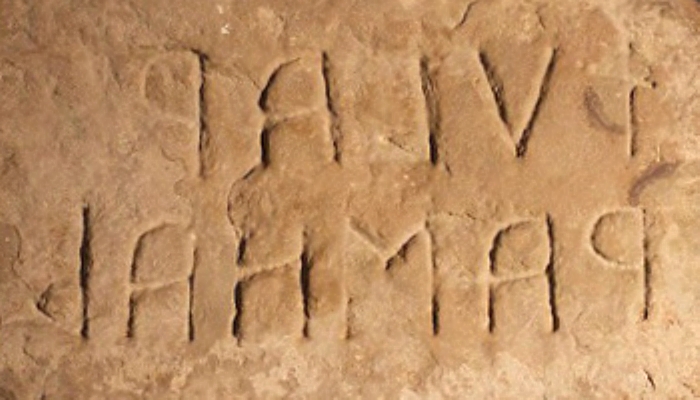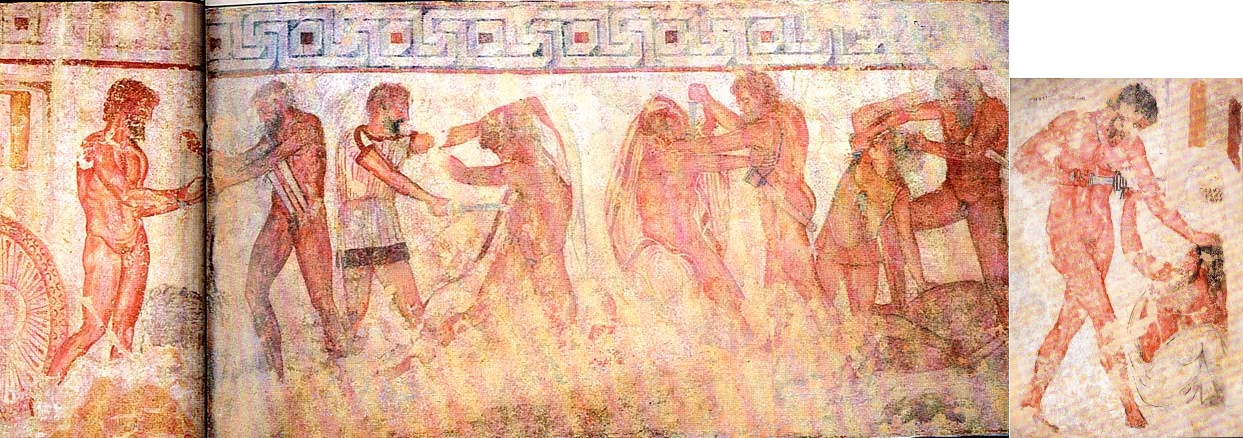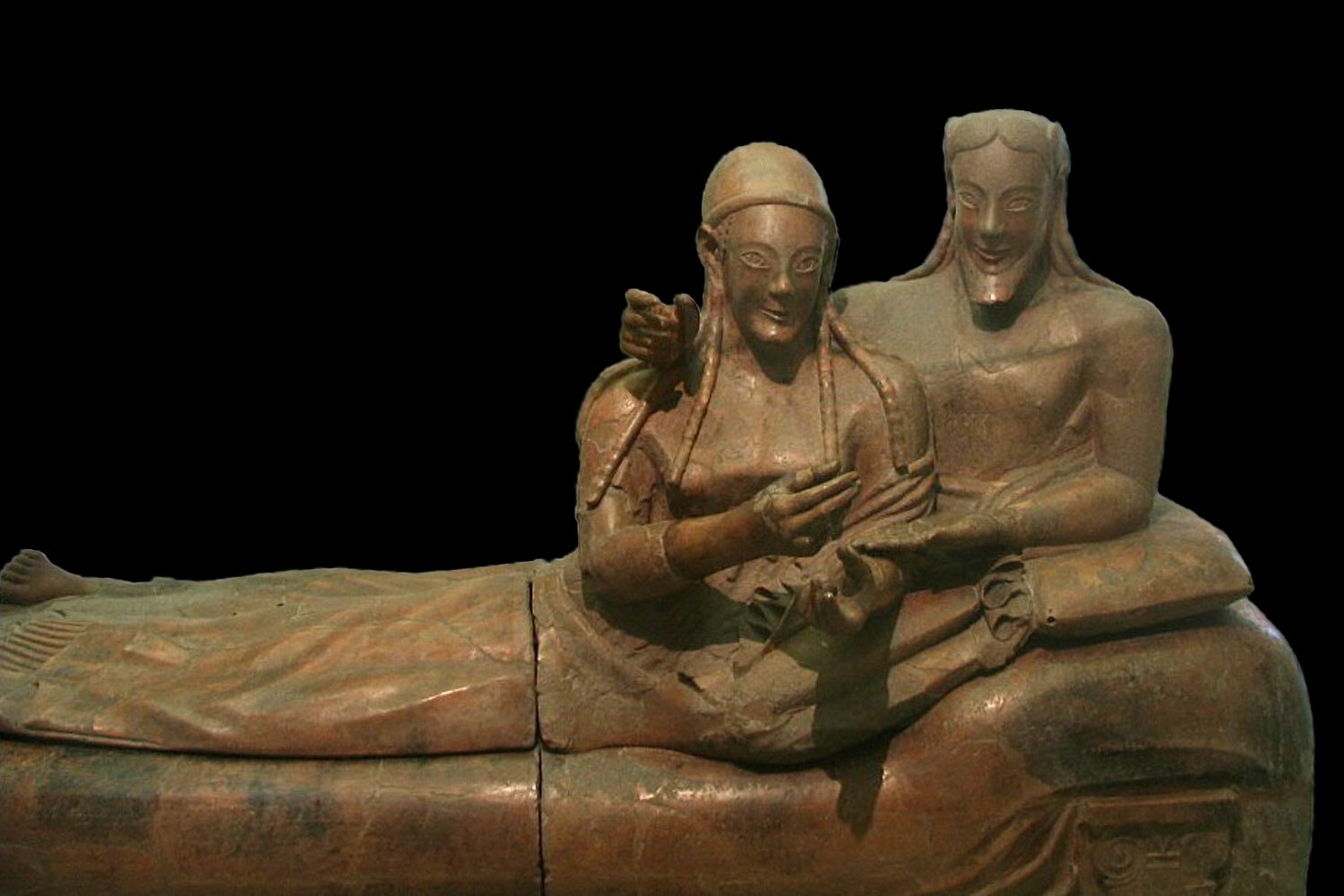|
Vulci
Vulci or Volci ( Etruscan: ''Velch'' or ''Velx'', depending on the romanization used) was a rich Etruscan city in what is now northern Lazio, central Italy. As George Dennis wrote, "Vulci is a city whose very name... was scarcely remembered, but which now, for the enormous treasures of antiquity it has yielded, is exalted above every other city of the ancient world." Vulci was located near the coast of the Tyrrhenian Sea about 80 km northwest of Rome, on the Fiora River, between Montalto di Castro and Canino. Remains of the city can be seen today. The Vulci, like other Etruscans, became master sculptors in bronze as acknowledged by ancient writers. Although most large bronzes have been lost, there remain some magnificent examples of Etruscan bronze work such as the Chimera of Arezzo and the Monteleone chariot, possibly made in Vulci. In the 19th century thousands of the ancient tombs of Vulci were discovered, and many were so well known and spectacular, such as the ... [...More Info...] [...Related Items...] OR: [Wikipedia] [Google] [Baidu] |
Etruscan Civilization
The Etruscan civilization ( ) was an ancient civilization created by the Etruscans, a people who inhabited Etruria in List of ancient peoples of Italy, ancient Italy, with a common language and culture, and formed a federation of city-states. After adjacent lands had been conquered its territory covered, at its greatest extent, roughly what is now Tuscany, western Umbria and northern Lazio, as well as what are now the Po Valley, Emilia-Romagna, south-eastern Lombardy, southern Veneto and western Campania. A large body of literature has flourished on the origins of the Etruscans, but the consensus among modern scholars is that the Etruscans were an indigenous population. The earliest evidence of a culture that is identifiably Etruscan dates from about 900 BC. This is the period of the Iron Age Villanovan culture, considered to be the earliest phase of Etruscan civilization, which itself developed from the previous late Bronze Age Proto-Villanovan culture in the same region, p ... [...More Info...] [...Related Items...] OR: [Wikipedia] [Google] [Baidu] |
Etruscan Cities
Etruscan cities were a group of ancient settlements that shared a common Etruscan language and culture, even though they were independent city-states. They flourished over a large part of the northern half of Italy starting from the Iron Age, and in some cases reached a substantial level of wealth and power. They were eventually assimilated first by Italics and ancient Greeks in the south, then by Celts in the north and finally in Etruria itself by the growing Roman Republic. The Etruscan names of the major cities whose names were later Romanised survived in inscriptions and are listed below. Some cities were founded by Etruscans in prehistoric times and bore entirely Etruscan names. Others, usually Italic in origin, were colonised by the Etruscans, who in turn Etruscanised their name (around 9 BC). The estimates for the populations of the largest cities ( Veii, Volsinii, Caere, Vulci, Tarquinia, Populonia) range between 25,000 and 40,000 each in the 6th century BC. Twelve ... [...More Info...] [...Related Items...] OR: [Wikipedia] [Google] [Baidu] |
Fiora River
The Fiora is a river in northern Lazio and southern Tuscany, central Italy, which springs from the southern flank of the Monte Amiata, near Santa Fiora. After crossing the Lazio Maremma, it flows in the north-western part of the province of Viterbo before getting into the Tyrrhenian Sea The Tyrrhenian Sea (, ; or ) , , , , is part of the Mediterranean Sea off the western coast of Italy. It is named for the Tyrrhenians, Tyrrhenian people identified with the Etruscans of Italy. Geography The sea is bounded by the islands of C ... near Montalto di Castro. One of the remarkable settlements in the Fiora River during the Bronze Age period is Crostoletto di Lamone, a plateau. External links Vulci Castle and Fiora River Rivers of Lazio Rivers of the Province of Grosseto Rivers of the Province of Viterbo Drainage basins of the Tyrrhenian Sea Rivers of Italy {{Italy-river-stub ... [...More Info...] [...Related Items...] OR: [Wikipedia] [Google] [Baidu] |
Servius Tullius
Servius Tullius was the legendary sixth king of Rome, and the second of its Etruscan dynasty. He reigned from 578 to 535 BC. Roman and Greek sources describe his servile origins and later marriage to a daughter of Lucius Tarquinius Priscus, Rome's first Etruscan king, who was assassinated in 579 BC. The constitutional basis for his accession is unclear; he is variously described as the first Roman king to accede without election by the Senate, having gained the throne by popular and royal support; and as the first to be elected by the Senate alone, with support of the reigning queen but without recourse to a popular vote. Several traditions describe Servius' father as divine. Livy depicts Servius' mother as a captured Latin princess enslaved by the Romans; her child is chosen as Rome's future king after a ring of fire is seen around his head. The Emperor Claudius discounted such origins and described him as an originally Etruscan mercenary, named Mastarna, who fou ... [...More Info...] [...Related Items...] OR: [Wikipedia] [Google] [Baidu] |
Etruscan Language
Etruscan ( ) was the language of the Etruscan civilization in the ancient region of Etruria, in Etruria Padana and Etruria Campana in what is now Italy. Etruscan influenced Latin but was eventually superseded by it. Around 13,000 Etruscan epigraphy, inscriptions have been found so far, only a small minority of which are of significant length; some bilingual inscriptions with texts also in Latin, Ancient Greek, Greek, or Phoenician language, Phoenician; and a few dozen purported loanwords. Attested from 700 BC to AD 50, the relation of Etruscan to other languages has been a source of long-running speculation and study. Nowadays, it is generally agreed to be in the Tyrsenian language family, but before it gained currency as one of the Tyrsenian languages, it was commonly treated as an Language isolate, isolate, although there were also a number of other less well-known hypotheses. The consensus among linguists and Etruscologists is that Etruscan was a Pre-Indo-European languages, Pre ... [...More Info...] [...Related Items...] OR: [Wikipedia] [Google] [Baidu] |
Villanovan
The Villanovan culture (–700 BCE), regarded as the earliest phase of the Etruscan civilization, was the earliest Iron Age culture of Italy. It directly followed the Bronze Age Proto-Villanovan culture which branched off from the Urnfield culture of Central Europe. The name derives from the locality of Villanova, a fraction of the municipality of Castenaso in the Metropolitan City of Bologna where, between 1853 and 1855, Giovanni Gozzadini found the remains of a necropolis, bringing to light 193 tombs, of which there were 179 cremations and 14 inhumations. The Villanovans introduced iron-working to the Italian Peninsula. They practiced cremation and buried the ashes of their dead in pottery urns of distinctive double-cone shape. History The name ''Villanovan'' of the early phases of the Etruscan civilization comes from the site of the first archaeological finds relating to this advanced culture, which were remnants of a cemetery found near ''Villanova'' ( Castenaso, 12 kilo ... [...More Info...] [...Related Items...] OR: [Wikipedia] [Google] [Baidu] |
Bucchero
Bucchero () is a class of ceramics produced in central Italy by the region's pre-Roman Etruscan population. This Italian word is derived from the Latin ''poculum'', a drinking-vessel, perhaps through the Spanish ''búcaro'', or the Portuguese ''púcaro''.Nicola Zingarelli, Vocabolario della Lingua Italiana, 2011. The Spanish word ''búcaro'' also means an odorous kind of clay formerly chewed by women, and from which those vessels were made. (María Moliner, Diccionario del uso del Español, 2007). Regarded as the "national" pottery of ancient Etruria, bucchero ware is distinguished by its black fabric as well as glossy, black surface achieved through the unique " reduction" method in which it was fired. After the leather-hard unfired ware was arranged in the kiln and the fire started, the vent holes were closed, thus reducing the supply of oxygen required in a normal kiln firing. In the smoke-filled atmosphere of the kiln, the oxygen-starved flames drew oxygen molecules from th ... [...More Info...] [...Related Items...] OR: [Wikipedia] [Google] [Baidu] |
National Etruscan Museum
The National Etruscan Museum () is a museum dedicated to the Etruscan civilization, Etruscan and Falisci, Faliscan civilizations, housed in the Villa Giulia in Rome, Italy. It is the most important Etruscan museum in the world. History The villa was built for Pope Julius III, for whom it was named. It remained in papal property until 1870, when, in the wake of the Risorgimento and the demise of the Papal States, it became the property of the Italy, Kingdom of Italy. The museum was founded in 1889 as part of the same nationalistic movement, with the aim of collecting together all the pre-Ancient Rome, Roman antiquities of Latium, southern Etruria and Umbria belonging to the Etruscan and Falisci, Faliscan civilizations, and has been housed in the villa since the beginning of the 20th century. Collections The museum's most famous single treasure is the terracotta funerary monument, the almost life-size ''Bride and Groom'' (the so-called ''Sarcofago degli Sposi'', or ''Sarcophagus o ... [...More Info...] [...Related Items...] OR: [Wikipedia] [Google] [Baidu] |
Canino
Canino is a town and ''comune'' of Italy, in the province of Viterbo (northern Lazio) in the internal part of Maremma Laziale. It is west of Valentano and northwest of Viterbo. It is also near the ancient Etruscan town of Vulci, and the destroyed city of Castro. Lucien Bonaparte, brother of Napoleon, was lord of Canino and is buried in the town's collegiate church. Canino was also a residence of the Farnese family; future pope Paul III was born here in 1468. The hills that surround Canino reach the ''Selva del Lamone'' and are cultivated with grapes and olive The olive, botanical name ''Olea europaea'' ("European olive"), is a species of Subtropics, subtropical evergreen tree in the Family (biology), family Oleaceae. Originating in Anatolia, Asia Minor, it is abundant throughout the Mediterranean ..., the famous olive oil ''extra vergine di oliva'', from the "Canina" olive variety, has been given DOP with Reg. CE n. 1263/96. References Cities and towns in L ... [...More Info...] [...Related Items...] OR: [Wikipedia] [Google] [Baidu] |
Villa Giulia
The Villa Giulia is a villa in Rome, Italy. It is named after Pope Julius III, who had it built in 1551–1553 on what was then the edge of the city. Today it is publicly owned, and houses the Museo Nazionale Etrusco, a collection of Etruscan art and artifacts. History Location The villa was built in an area of Rome known as the 'Vigna Vecchia' (which was once against the city walls), lying on the slopes of ''Monte Parioli'', as a 'Villa Suburbana' and a place of repose. Design The pope, a highly literate connoisseur of the arts, assigned the initial design of the building to Giacomo Barozzi da Vignola in 1551–1553. The nymphaeum and other garden structures, however, were designed by Bartolomeo Ammanati, all under the supervision of Giorgio Vasari. Michelangelo also worked there. Pope Julius took a direct interest in the villa's design and decor and spent vast amounts of money on enhancing its beauties. Villa Giulia became one of the most delicate examples of Mannerist a ... [...More Info...] [...Related Items...] OR: [Wikipedia] [Google] [Baidu] |
Marsiliana
Marsiliana, known also as Marsiliana d'Albegna, is a village in Tuscany, central Italy, administratively a frazione of the comune of Manciano, province of Grosseto. At the time of the 2001 census its population amounted to 246. Geography Marsiliana is about 40 km from Grosseto and 18 km from Manciano. It is situated in southern Maremma, along the ''Maremmana'' Regional Road halfway between Manciano and the Tyrrhenian Sea at Albinia. The old centre of Marsiliana is situated on the top of a hill overlooking the river Albegna. History The territory of Marsiliana is known for the presence of Etruscan civilization, Etruscan archaeological sites: the most important one is the area of ''Banditella'', where a necropolis of more than one hundred tombs (8th-6th century BC) was discovered in 1908. The village developed at the foot of the hill after the ''Riforma fondiaria'' (land reform) in the 1950s. Buildings * ''Maria Regina del Mondo'', main parish church of the village, ... [...More Info...] [...Related Items...] OR: [Wikipedia] [Google] [Baidu] |
Pitigliano
Pitigliano is a town in the province of Grosseto, located about south-east of the city of Grosseto, Tuscany, Italy. It is one of I Borghi più belli d'Italia ("The most beautiful villages of Italy"). The town is known as ''the little Jerusalem'', for the historical presence of a Jewish community that has always been well integrated into the social context and that has its own synagogue. The Synagogue was rededicated by a visiting AACI Group from Israel at a service in 2013, led by Rabbi Dr Jeffrey M Cohen, of London. History Pitigliano and its area were inhabited in Etruscan times but the first extant written mention of it dates only to 1061. In the early 13th century it belonged to the Aldobrandeschi family and by the middle of the century it had become the capital of the surrounding county. In 1293, the county passed to the Orsini family, signalling the start of 150 years of intermittent wars with Siena, at the end of which, in 1455, a compromise of sorts was reached: S ... [...More Info...] [...Related Items...] OR: [Wikipedia] [Google] [Baidu] |






